The Art of Sewing: Exploring the Various Types of Needles

As a beginner or seasoned sewer, choosing the right sewing machine needle for a particular project is critical to the outcome of the final product. With so many range of sewing machine needles available, it can be overwhelming and confusing to decide which one to use. In this guide, we’ll explain various types of sewing machine needles, their sizes, and the fabrics they’re used for, to help you choose a needle for your sewing project.
1 Types of Sewing Machine Needles
You can select from a variety of a sewing machine needle, each type of the needle is designed for a specific sewing task. The three main types of needles are Universal, Ballpoint, and Sharp needles.
Universal Needles
Universal needles are the most widely used type of needle. They have a slightly rounded tip on the needle that allows them to sew through a variety of fabrics such as knits, woven fabrics, and synthetics. Universal needles come in different sizes, ranging from 60/8 (the smallest size) to 120/19 (the largest size).
Ballpoint Needles
Ballpoint needles have rounded tip that allows them to slide between the fibers of knit fabrics instead of piercing them. This helps prevent the fabric from running or getting damaged during sewing. Ballpoint needles are available in a range of various sizes, including 70/10, 80/12, and 90/14.
Sharp Needles
Sharp needles, also popular as Microtex or Quilting needles, have a fine point and are designed for use with tightly woven fabrics such as cotton, silk, and linen. They produce precise stitches and are ideal for piecing, quilting, and topstitching. Sharp needles come in different sizes, ranging from 60/8 to 100/16.
2 Sewing Machine Needle Sizes
Sewing machine needles are available in different sizes, ranging from 60/8 to 120/19. The needle size is calculated by the thickness of the needle shaft, and the size of the eye and the point. The larger the number, the thicker the needle.
Universal Needles
Universal needles are the most popularly used needles and can be used for various fabrics such as woven and knit fabrics. They have a slight ballpoint that helps to prevent the needle from breaking or snagging the fabric. Universal needles are available in various sizes, ranging from 60/8 to 110/18, and the size you choose depends on the fabric’s weight.
Jersey Needles
Jersey needles are designed to sew knit fabrics such as jersey, interlock, and other stretch fabrics. These needles have a medium ballpoint that allows them to penetrate knit fabrics without causing damage or running the fabric. Jersey needles come in sizes ranging from 70/10 to 100/16.
Stretch Needles
Stretch needles are similar to jersey needles, but they have a more rounded tip that can prevent skipped stitches when working with elastic or highly elastic fabrics. These needles come in sizes ranging from 75/11 to 90/14.
Denim Needles
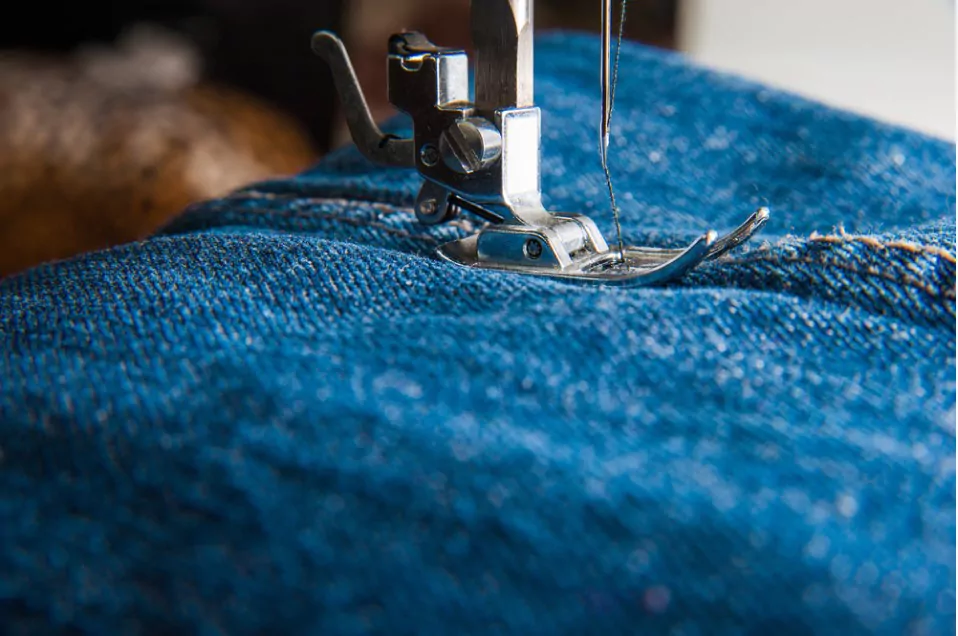
Denim needles are suitable for heavyweight fabrics such as canvas, denim, and other thick fabrics. They come with a sharp point and a reinforced blade that can penetrate the fabric’s layers without causing damage. Denim needles come in sizes ranging from 90/14 to 110/18.
Leather Needles
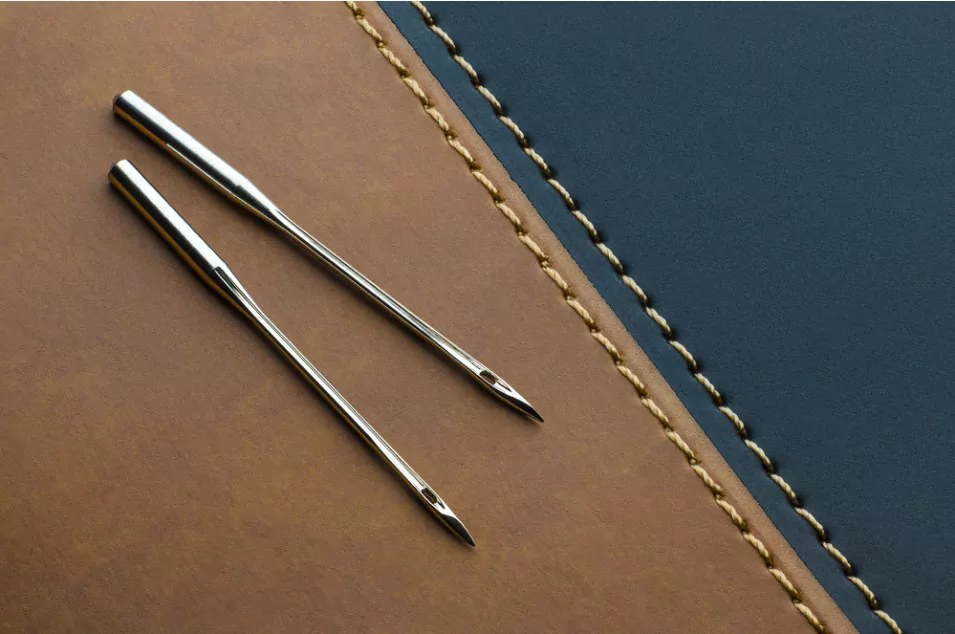
Leather needles are designed to sew through thick and tough materials such as leather, suede, and vinyl. They also come with a sharp point that can pierce through the material and a wedge-shaped point that helps to cut the fabric as it sews. Leather needles come in sizes ranging from 80/12 to 110/18.
Microtex Needles
Microtex needles have a very sharp point that can penetrate fine and delicate fabrics such as silk, satin, and chiffon. They also work well on quilting cotton and other tightly woven fabrics. Microtex needles come in sizes ranging from 60/8 to 110/18.
Quilting Needles

Quilting needles have a tapered point that can penetrate multiple layers of fabric without damaging them. They are designed for machine quilting and can also be used for piecing and embroidery. Quilting needles come in sizes ranging from 75/11 to 90/14.
Embroidery Needles
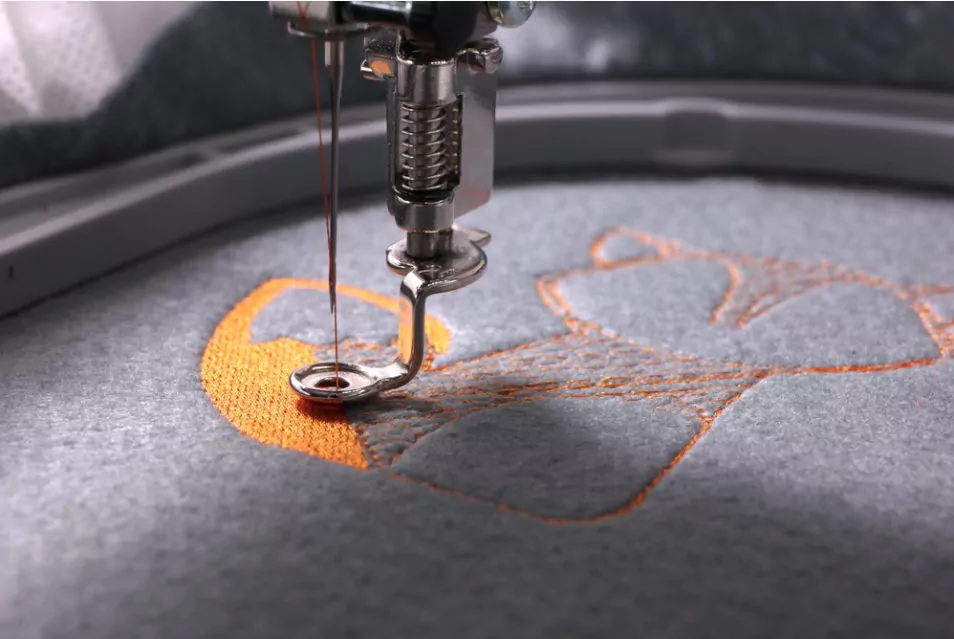
Embroidery needles have a sharp point and a wide eye that can accommodate embroidery thread. They are designed for machine embroidery and can also be used for free-motion quilting. Embroidery needles are available in sizes ranging from 75/11 to 90/14.
Twin Needles
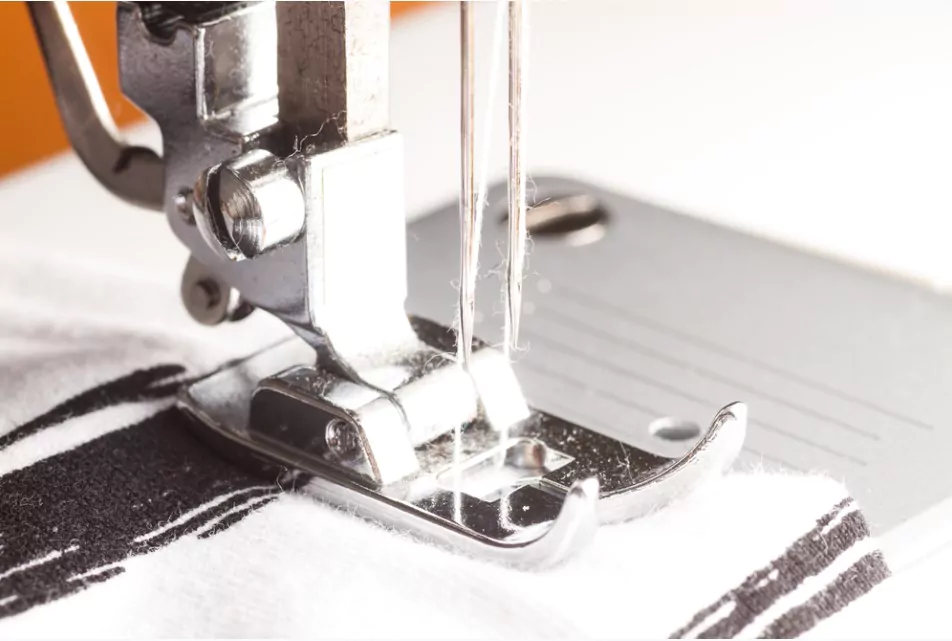
Twin needles are two needles mounted on a single shank and are used for creating parallel stitches or decorative effects such as pin-tucks. They come in various sizes, and the distance between the needles varies, depending on the size of the needle.
Wing Needles
Wing needles are used for decorative stitching and heirloom sewing. They have a wide, flat head that creates a hole in the fabric as it sews, giving the appearance of hand embroidery. Wing needles come in sizes ranging from 100/16 to 120/20.
Metallic Needles
Metallic needles are designed to work with metallic threads and prevent breakage and shredding. They have a large eye that can accommodate the thicker metallic thread, and they also have a polished surface that reduces friction, preventing damage to the metallic thread. Metallic needles come are available in an array of sizes, ranging from 75/11 to 100/16.
Topstitching Needles
Topstitching needles have an extra-long and wide eye that can accommodate heavier threads such as topstitching thread. They are used for decorative topstitching on denim, canvas, and other heavyweight fabrics. Topstitching needles come in sizes ranging from 90/14 to 100/16.
Hemstitch Needles
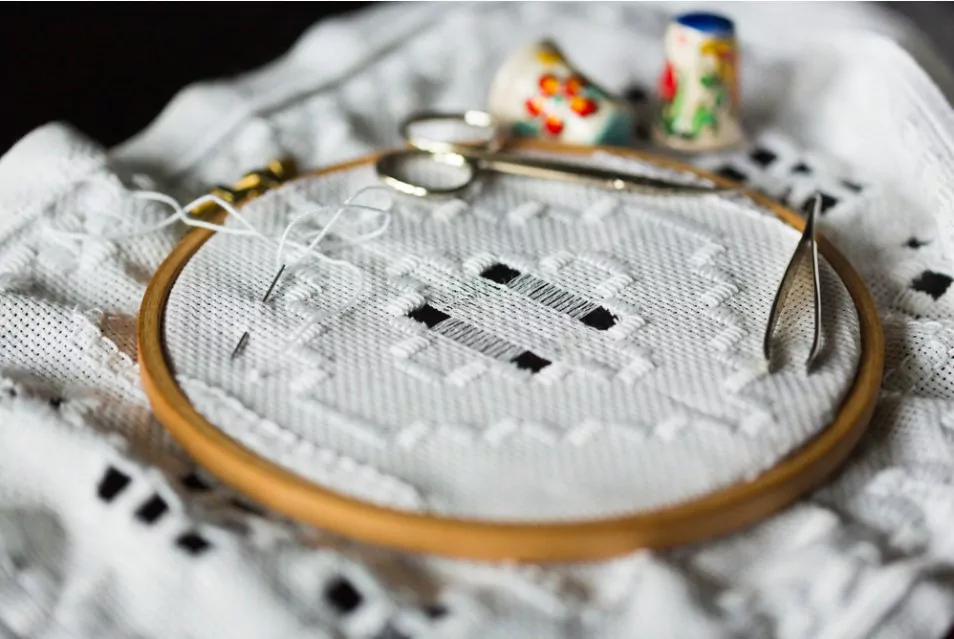
Hemstitch needles have a blade that can cut a hole inside the fabric, creating a ladder-like stitch. They are used for creating decorative hems on lightweight fabrics such as batiste and lawn. Hemstitch needles come in sizes ranging from 100/16 to 120/20.
Self-threading Needles
Self-threading needles have a small slot in the side of the needle that allows the thread to be inserted without having to thread it through the eye of the needle. They are useful for people with poor eyesight or dexterity issues.
3 Choosing the perfect Needle for Your Fabric
Choosing the perfect needle for your fabric is crucial to the quality of your sewing project. Using any wrong needle can lead to skipped stitches, broken threads, or even damage to the fabric. Here’s a guide to help you choose the right needle for your fabric.
Knit Fabrics
Use a ballpoint needle when sewing knit fabrics. The rounded tip of the needle helps it slide between the fibers of the fabric without damaging it.
Woven Fabrics
Use a universal needle when sewing woven fabrics such as cotton, linen, and silk. A universal needle is used for most woven fabrics and produces clean, even stitches.
Denim and Canvas
Use a jeans needle when sewing thick fabrics such as denim or canvas. The needle has a sharp point which can penetrate through multiple layers of thick fabric without breaking.
Leather
Try using a leather needle when sewing leather. The needle has a chisel point that can pierce through the thick material without any wear or tear or damaging it.
Silk and Chiffon
Use a fine needle, such as a Microtex needle, when sewing delicate fabrics such as silk or chiffon. A fine needle prevents damage to the fabric and produces precise stitches.
4 Wrapping Up
In conclusion, choosing the suitable sewing machine needle is essential to the success of your sewing project. Whether you’re working on knit, woven, or thick fabrics, there is a type of needle that is suitable for the job. By understanding the different types of needles, their sizes, and the fabrics they’re used for, you can confidently select the right needle for your project and achieve professional-looking results.
FAQ's about Types of Needle
What needle is best for cotton?
When working with lighter cotton fabrics, it’s important to choose a needle that is appropriate for the weight of the fabric. A sharp point needle in size 14 (90/14) is a good choice for lightweight cotton as it can easily penetrate the fabric without damaging it.
If you’re sewing an unlined or lightweight garment, like a cotton blouse, it’s recommended to use a cotton-specific needle in size 12 (80/12) for more delicate work. Additionally, to ensure that the stitches don’t pull out, it’s best to finish by hand using cotton thread. This will help to reinforce the seams and prevent them from coming undone during wear. Overall, taking the time to choose the right needle and thread can make a big difference in the quality and durability of your finished garment.
What size needle is best for thick fabric?
When working with thick fabrics, it’s important to choose a needle that is strong and sharp enough to penetrate the fabric without breaking or damaging it. Here are some factors to consider when choosing a needle size for thick fabric:
- Needle size: The size of the needle is determined by the thickness of the fabric you’re sewing. For thick fabrics like denim or canvas, a larger needle size between 16-18 (100/16-110/18) is generally recommended.
- Needle type: When working with thick fabrics, it’s best to use a needle specifically designed for heavy-duty use. Denim or jeans needles are a good choice, as they are thicker and stronger than regular sewing needles and have a sharp point that can penetrate thick layers of fabric.
- Sewing machine compatibility: It’s important to ensure that the needle you choose is compatible with your sewing machine. Be sure to consult your machine’s manual or manufacturer’s website for recommended needle sizes and types.
In summary, for thick fabrics like denim or canvas, a larger-sized needle (between 16-18 or 100/16-110/18) and a needle specifically designed for heavy-duty use, like a denim or jeans needle, is recommended. This will ensure that the needle can easily penetrate the thick layers of fabric without breaking or damaging it, and will help to produce clean and even stitches.
What needle is best for sewing stretch fabric?
When sewing stretch fabrics, it’s important to choose a needle that can penetrate the fabric without breaking the fibers or causing runs or snags. Here are some factors to consider when choosing a needle for stretch fabric:
Needle size: A smaller needle size is generally recommended for stretch fabrics, as it will create smaller holes and help to prevent runs or snags. A size 75/11 or 80/12 needle is a good choice for most stretch fabrics.
Needle type: A ballpoint or stretch needle is recommended for sewing stretch fabrics, as it has a slightly rounded tip that can slide between the fibers of the fabric without damaging them. A universal needle can also be used, but it’s important to ensure that the needle is sharp and in good condition.
Thread type: Choosing the right thread is also important when sewing stretch fabrics. A high-quality polyester or nylon thread with some stretch or give will help to ensure that the seams don’t break or snap when the fabric is stretched.
What size needle is best for silk?
When sewing with silk, it’s important to choose a needle that is appropriate for the weight and delicacy of the fabric, as well as the specific requirements of your sewing machine. Here are some factors to consider when choosing a needle size for silk:
- Needle size: The size of the needle is determined by the weight of the fabric you’re sewing. For most silk fabrics, a smaller needle size between 8-10 (60/8-70/10) is generally recommended. However, it’s important to consider the weight and thickness of your specific fabric and adjust the needle size accordingly.
- Needle type: When working with delicate silk fabrics, it’s best to use a sharp or Microtex needle. These needles have a fine point that can easily penetrate the fabric without causing damage or snags. It’s important to ensure that the needle is sharp and in good condition to prevent damage to the fabric.
- Thread type: Choosing the right thread is also important when sewing with silk. A high-quality silk or polyester thread is recommended, as these threads have a slight stretch that can help to prevent the seams from breaking or snapping when the fabric is stretched.
Community Q&A
About This Article
This article has been viewed 996 times.



